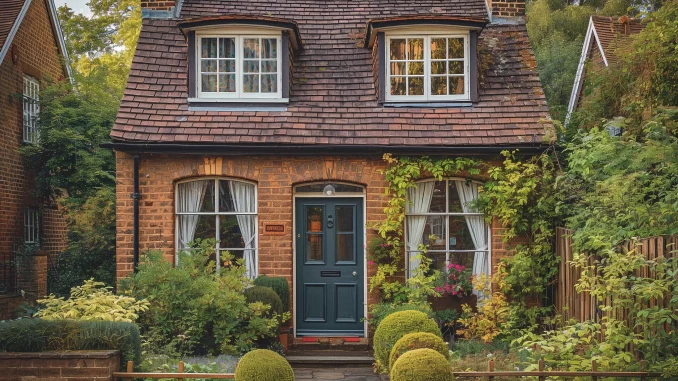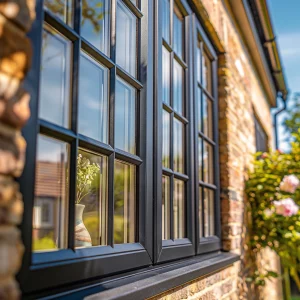
Enhancing Thermal Efficiency through Sash Window Insulation
The optimisation of sash windows plays a pivotal role in the quest for energy efficiency within traditional homes. These windows, often found in properties with Georgian, Victorian, and Edwardian architecture, hold both historical significance and aesthetic charm. However, their traditional design poses challenges in maintaining indoor thermal comfort due to inherent draughtiness and single-glazed panels.
This section delves into the historical context, primary challenges, and effective insulation techniques for enhancing energy efficiency while preserving architectural integrity.
Architectural Significance

Georgian, Victorian, and Edwardian properties are renowned for their distinctive architectural styles, characterised by grandeur and attention to detail. Central to these designs are sash windows, which feature vertically sliding panels and counterweights. Beyond their functional purpose, these windows symbolise craftsmanship and historical heritage, contributing to the overall charm of period homes.
Primary Challenges in Thermal Regulation
Despite their architectural appeal, traditional sash windows present significant challenges in thermal regulation. The design’s reliance on single-glazed panels and wooden frames exacerbates heat loss, leading to inefficiencies in maintaining consistent indoor temperatures. Draughts from frame gaps further compound the issue, creating discomfort and increasing energy consumption for heating.
“Traditional sash windows, while beautiful, pose significant challenges in thermal regulation due to their old design and materials. However, with professional intervention, these challenges can be effectively managed. We use advanced techniques like draught-proofing, secondary glazing, and tailored double-glazing solutions to enhance the windows’ thermal performance without compromising their historical integrity. Properly insulating these windows not only improves comfort but also significantly reduces energy consumption,” explains Arthur East, a professional window installer from Sash Windows London.
Insulation Techniques for Energy Efficiency
Addressing the thermal inefficiencies of sash windows requires a multifaceted approach encompassing various insulation techniques. These methods aim to minimise heat loss while preserving the aesthetic integrity of the windows. Some key techniques include:
- Draught Proofing: Utilising tubular, brush, or metal fin inserts to seal gaps around window frames and sashes. Brush pile technology replaces worn staff and parting beads, effectively blocking draughts and enhancing thermal insulation.
- Shutters and Curtains: Installing timber shutters or heavy fabric curtains provides an additional thermal barrier while complementing the historical aesthetics of sash windows. These additions reduce heat loss and enhance privacy and light control.
- Secondary Glazing: Implementing secondary glazing solutions such as low-emissivity glass, cling film, or Perspex sheets offers temporary or permanent insulation benefits. Secondary glazing improves thermal efficiency without compromising the appearance of the original windows.
- Double Glazing Retrofit: Integrating double glazing units within existing sash window frames presents a less invasive yet highly effective insulation solution. This retrofitting method reduces heat transfer while preserving the architectural charm of period properties.
Material Selection

Both temporary and permanent solutions must be evaluated when considering insulation materials for sash windows. Temporary options such as cling film, bubble wrap, and foam rolls offer ease of application and removal, making them ideal for renters seeking temporary improvements in energy efficiency.
On the other hand, permanent solutions such as rigid foam and expanding foam sealant provide structural durability and long-term efficacy, but they require careful consideration of their impact on historical integrity and architectural authenticity.
Efficiency Improvements
The adoption of comprehensive insulation techniques for sash windows can lead to significant improvements in thermal efficiency and environmental sustainability. By reducing heat loss by up to 75% through combined methods, homeowners can lower energy consumption and decrease their environmental footprint. These efficiency improvements contribute to cost savings and promote eco-friendly living practices.
Regulatory Considerations
Ensuring the longevity of sash window insulation requires regular maintenance and adherence to regulatory guidelines. Upkeep tasks such as painting, sealing, and overhauling draught seals are essential for preserving the effectiveness of insulation measures. Moreover, property owners must consider regulatory requirements, particularly in listed or heritage properties, where permissions may be necessary for alterations affecting architectural integrity.
Maintenance and Durability of Insulated Windows
Maintaining insulated sash windows is crucial to sustaining their benefits over time. Regularly checking and replacing worn-out seals, ensuring the frames are well-painted and rot-free, and occasionally cleaning the glazing can extend the life of the windows significantly. Furthermore, well-maintained windows can maintain their aesthetic appeal and functionality for decades, proving that the investment in high-quality materials and craftsmanship pays off.
Cost-Effectiveness and Long-Term Benefits of Sash Window Insulation

As we delve into the economic aspects of sash window insulation, property owners must understand the long-term benefits and potential savings these improvements can bring, alongside the initial costs involved. By exploring various insulation methods and their cost implications, homeowners can make informed decisions that balance upfront expenses with long-term energy savings and enhanced property value.
Analysing the Return on Investment
The return on investment (ROI) from insulating sash windows can be significant, particularly in older homes with substantial energy loss through windows. The initial costs of implementing insulation techniques like double glazing or draught-proofing are offset over time by reduced heating bills. For instance, studies have shown that effective window insulation can reduce overall energy consumption by up to 20%, which translates into considerable savings on utility bills annually.
Comparative Costs of Insulation Methods
The cost of window insulation varies widely based on the chosen method:
- Draught Proofing: This is often the most cost-effective option, providing substantial improvement in thermal efficiency for a relatively low investment. It involves installing seals or brushes that are inexpensive but effective in minimising air leakage.
- Secondary Glazing: Costs more than draught-proofing but less than double-glazing, offering a good balance between performance and aesthetic preservation, especially for listed properties.
- Double Glazing Retrofit: This is usually the most expensive option due to the complexity of integrating new technology into existing frames. However, it offers the best thermal performance and noise reduction, making it a worthwhile investment for those planning long-term residency.
Long-Term Benefits Beyond Energy Savings
Beyond the immediate financial savings on energy bills, there are several other long-term benefits to consider:
- Increased Property Value: Homes with upgraded, energy-efficient windows are often more attractive to buyers, potentially increasing the property’s market value.
- Improved Comfort: Insulation reduces drafts and cold spots, significantly enhancing living comfort within the home.
- Environmental Impact: Reducing energy consumption contributes to lower carbon emissions, aligning with broader environmental sustainability goals.
Temporary vs. Permanent Insulation Solutions
Temporary solutions, such as the application of cling film or Perspex sheets, cater to those who either rent their properties or seek non-permanent methods due to planning restrictions in heritage areas. These materials can be easily applied and removed without damaging the original window structures, making them ideal for tenants or those in temporary residences.
On the other hand, permanent solutions like double glazing retrofits and rigid foam installations offer long-lasting benefits but require more significant initial investment and, sometimes, structural modifications that need to be sympathetically integrated into the property’s historical context.
Conclusive Thoughts
In conclusion, insulating sash windows in traditional homes offers energy efficiency, enhanced property value, and improved living comfort. Careful selection of insulation techniques, considering cost and historical integrity, can yield substantial long-term benefits.
Homeowners are encouraged to consider both temporary and permanent solutions, balance aesthetic preservation with modern energy standards, and utilise community and expert resources to navigate the regulatory landscape effectively. Ultimately, sash windows’ strategic insulation protects architectural heritage and contributes to environmental sustainability and economic savings.